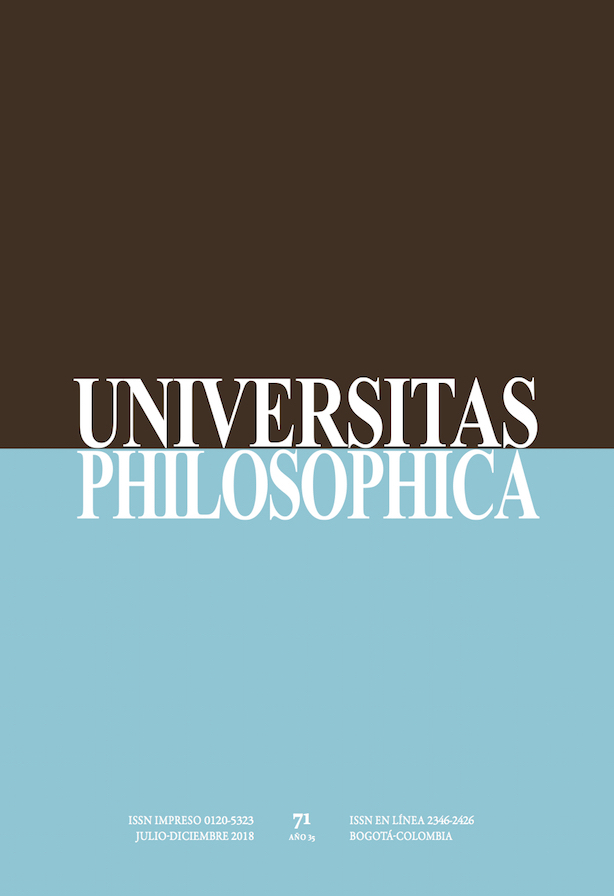Abstract
The mimetic theory forged by René Girard is completely closed by its own violence. Given that human violence was contained for centuries, by the victimary mechanism, its deconstruction by the Cross has unleashed a complete and total violence, leading us to the possibility of a real Apocalypse. We show here that this closure is based on a metaphysical view of desire, guiding us from the objet to the being of the model. Since Girard is always confined into metaphysics by his constant use of the paradigm of the image, the presence and, consequently, the idol, we demonstrate that there is still a way out of violence, the same way that is today the way out of metaphysics. With Jean-Luc Marion and his phenomenology of givenness, we oppose the paradigm of the icon to the one of the idol, and therefore the model of the sign to the one of the image. We demonstrate then that global mimetic violence can be stopped if we no longer desire objects and start desiring saturated phenomena, which implies a complete shift in the way we think and receive phenomena.
Anspach, M. (2002). À charge de revanche, Figures élémentaires de la réciprocité. Paris : Seuil.
Armogathe, J-R. (dir.) (2011). Histoire générale du christianisme. Paris : PUF. Derrida, J. (1967). De la grammatologie. Paris : Les Éditions de minuit. Derrida, J. (1980). La carte postale, de Socrate à Freud et au-delà. Paris : Flammarion.
Descartes, R. (1992). Méditations métaphysiques. Œuvres philosophiques tome II (pp. 375-505). Paris : Garnier.
Dupuy, J-P. (2002). Avions-nous oublié le mal ? Penser la politique après le 11 septembre. Paris : Bayard.
Girard, R. (1961). Mensonge romanesque et vérité romantique. Paris : Grasset. Réédition in Girard, R. (2007). De la violence à la divinité. (pp. 29-292) Paris : Grasset.
Girard, R. (1972). La violence et le sacré. Paris : Grasset. Réédition in Girard, R. (2007) De la violence à la divinité (pp. 293-699) Paris : Grasset.
Girard, R. (1999). Je vois Satan tomber comme l’éclair. Paris : Grasset. Réédition
(2001), Paris : LGF.
Girard, R. (2007). Achever Clausewitz. Paris : Carnets Nord. Édition revue et augmentée (2011) Paris : Flammarion.
Heidegger, M. (1986). Être et temps. Paris : Gallimard.
Kant, E. (1980). Critique de la raison pure. Œuvres Philosophiques I, Des premiers écrits à la Critique de la raison pure (pp. 719-1470), Paris : Gallimard.
Kant, E. (1985). Critique de la faculté de juger. Œuvres Philosophiques II, Des prolégomènes aux écrits de 1791 (pp. 845-1299), Paris : Gallimard.
Levinas, E. (1961). Totalité et infini, Essai sur l’extériorité. La Haye : Martinus Nijhoff.
Levinas, E. (1974). Autrement qu’être ou au-delà de l’essence. La Haye : Martinus Nijhoff.
Levinas, E. (2009). Œuvres 1, Carnets de captivité et autres inédits. Paris: Grasset. Marion, J-L. (1975). Sur l’ontologie grise de Descartes, Science cartésienne et savoir aristotélicien dans les Regulae. Paris : Vrin.
Marion, J-L. (1982). Dieu sans l’être. Paris : Fayard. Réédition (1991, 2002) Paris : PUF.
Marion, J-L. (1991). La croisée du visible. Paris : La Différence. Réédition (1996, 2007) Paris : Presses Universitaires de France.
Marion, J-L. (1997). Étant donné, Essai d’une phénoménologie de la donation. Paris : PUF. Réédition (2005) Paris : PUF.
Marion, J-L. (2001). De surcroît, Études sur les phénomènes saturés. Paris : PUF. Réédition (2010). Paris : PUF.
Marion, J-L. (2005a). La banalité de la saturation, Le visible et le révélé (pp. 143-182), Paris : Cerf.
Marion, J-L. (2005b). Le phénomène saturé, Le visible et le révélé (pp. 35-74), Paris : Cerf.
Marion, J-L. (2012). La rigueur des choses, Entretiens avec Dan Arbib. Paris : Flammarion.
Pascal, B. (2000). Pensées retranchées, Œuvres Complètes tome II (pp. 851-868), Paris : Gallimard.
Ramond, C. (2002). Récits et Images du Rêve, Colloque Le rêve, entre science et philosophie, université Paris 1, UFR de philosophie / ED de philosophie, Resp. Christiane Chauviré, Paris, 19-21 septembre 2002. http://perso. orange.fr/charles.ramond/Recits_et_Images_du_Reve.pdf
Rey, O. (2016). Quand le monde s’est fait nombre. Paris : Stock.
Serres, M. (2012). Petites poucettes. Paris : Le Pommier.
Spinoza, B. (1966). Lettre LVI à Hugo Boxel, Œuvres IV (pp. 297-300), Paris : Flammarion.
Vinolo, S. (2010). Critique de la raison mimétique – Girard lecteur de Sartre. C. Ramond (Ed.), La théorie mimétique : de l’apprentissage à l’apocalypse
(pp. 59-104). Paris : Presses Universitaires de France.
Vinolo, S. (2012). Dieu n’a que faire de l’être, introduction à l’œuvre de Jean-Luc Marion. Paris : Germina.
Vinolo, S. (2013). La majorité contre la foule. Cités, 53, 2013/1, pp. 87-106. Vinolo, S. (2016). La tentation moderne de Jean-Luc Marion. Dialogue 55, pp.
343-362.
Vinolo, S. (2017). ¿Qué más da? La estética en Jean-Luc Marion. Escritos, Vol. 25, N. 54, pp. 197-220.
This journal is registered under a Creative Commons Attribution 4.0 International Public License. Thus, this work may be reproduced, distributed, and publicly shared in digital format, as long as the names of the authors and Pontificia Universidad Javeriana are acknowledged. Others are allowed to quote, adapt, transform, auto-archive, republish, and create based on this material, for any purpose (even commercial ones), provided the authorship is duly acknowledged, a link to the original work is provided, and it is specified if changes have been made. Pontificia Universidad Javeriana does not hold the rights of published works and the authors are solely responsible for the contents of their works; they keep the moral, intellectual, privacy, and publicity rights.
Approving the intervention of the work (review, copy-editing, translation, layout) and the following outreach, are granted through an use license and not through an assignment of rights. This means the journal and Pontificia Universidad Javeriana cannot be held responsible for any ethical malpractice by the authors. As a consequence of the protection granted by the use license, the journal is not required to publish recantations or modify information already published, unless the errata stems from the editorial management process. Publishing contents in this journal does not generate royalties for contributors.


